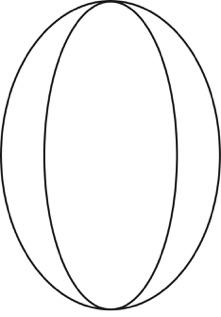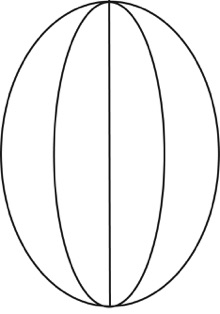Meridian
Division
Meridian
Division

The Meridian division is a very simple one, although not a horribly common one. This division is a longitudinal, dividing the surface of the egg into long tapering strips. This usually results in four repeating design elements, although any (usually) even number of sections can be created.
Binyashevsky shows us three such pysanky from various regions of Ukraine:



“Oak Leaves,” Zaporizhya; “Black Sea,” Kherson region; “Bezkonechnyk (Endless Line),” Poltava region
While the division is fairly simple, it is less common than one would expect. It is seen more often in those regions where pysanky tend to be less complex, i.e. in the steppes and forests of Ukraine, rather than in the mountains.
The most common version of this division is that with four vertical sections, but versions with six and eight sections can also be seen, as in these pysanky from Volyn:



Volynian pysanky with four, six and eight longitudinal divisions
An uncommon version of this division is this pysanka from the Cherkasy region, with twelve divisions:


The motifs within the divisions can be identical or alternating (odd numbers of divisions are not usually seen), as demonstrated in the examples above. Bukovynian pysanky include examples where a different motif is used in each of the four segments.
The orientation of the motifs can also be uniform or alternating, as shown in the two examples here:


Podillіan pysanky with motifs oriented uniformly (left) and in an alternating manner
Creating this division is quite simple. You start by making a simple equatorial line (A), for purposes of later orientation. You then draw a longitudinal (up-and-down) line, as you would for the lateral division (B).
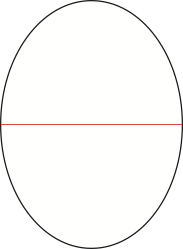

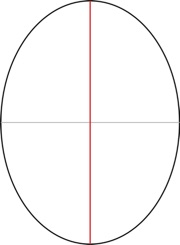
A B
Next you draw another longitudinal line that crosses the equator halfway between the other two lines. The simplest way to assure that your sections will be even is to measure a spot exactly one half way between the lines, and mark it (red dot) (C).
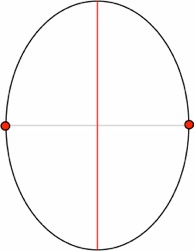
C
Next, draw a line from these two dots to the top and bottom of the egg. You can either draw down to the dots from either end, or up from the dots to the top and bottom of the egg. If you turn the egg just a bit, it will look like D below. (Note that the new up-and-down line is dotted, previous line from C is solid red.)
Remember, these are all PENCIL lines that we are drawing.
This will give you a Meridian (longitudinal) 4 division (E):
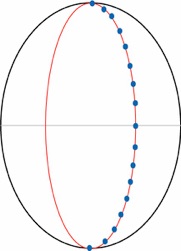

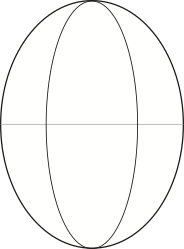
D E
If you now wax in the up-and-down lines, your pysanka will look like this:
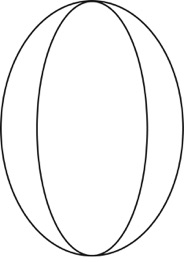
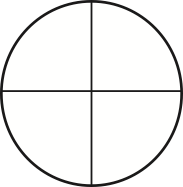
Side Top
To create a version with 8 sections, you simply add another line between each of the up-and-down lines found in step D above. Measure the distances to assure they will be even, and draw in the up-and-down lines (E):
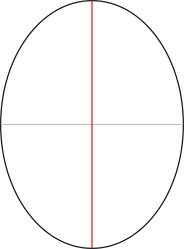

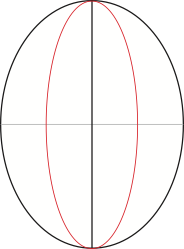
D E
Once again, these are all pencil lines. The result is an egg with 8 long wedge-like sections:
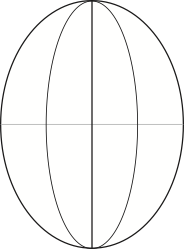
F
And, once you’ve waxed in the up-and-down lines, this is what your egg will look like:
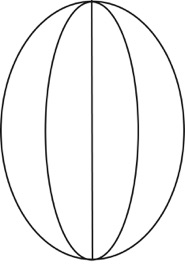
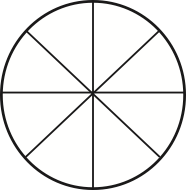
Side Top
Other, less common divisions (e.g. 6 or 12) can be made in a similar manner. Start with egg B and measure along the equator with a measuring tape, marking even divisions, and then draw your lines.
While it is fairly easy to “eyeball” the 4 and 8 divisions, it’s much more difficult to accurately estimate divisions based on thirds – actually measuring is necessary to get nice, even sections. As in carpentry, it is better to measure twice than to have to do it all over later......
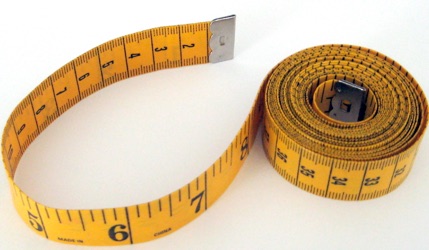
Back to Main Writing Pysanky page
Back to Main Pysankarstvo page
Note: All photos, illustrations and text © Luba Petrusha 2007 (except Binyashevsky prints and measuring tape). All Rights Reserved. Reproduction prohibited without expressed consent. May contact via e-mail (link below).
